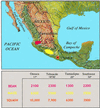Documenting plant domestication: the consilience of biological and archaeological approaches
- PMID: 11171946
- PMCID: PMC33375
- DOI: 10.1073/pnas.98.4.1324
Documenting plant domestication: the consilience of biological and archaeological approaches
Figures

Comment on
-
The earliest archaeological maize (Zea mays L.) from highland Mexico: new accelerator mass spectrometry dates and their implications.Proc Natl Acad Sci U S A. 2001 Feb 13;98(4):2101-3. doi: 10.1073/pnas.98.4.2101. Proc Natl Acad Sci U S A. 2001. PMID: 11172082 Free PMC article.
-
Archaeological evidence of teosinte domestication from Guilá Naquitz, Oaxaca.Proc Natl Acad Sci U S A. 2001 Feb 13;98(4):2104-6. doi: 10.1073/pnas.98.4.2104. Proc Natl Acad Sci U S A. 2001. PMID: 11172083 Free PMC article.
References
-
- Smith B D. The Emergence of Agriculture. New York: Scientific American Library; 1998.
-
- Piperno D R. Nature (London) 2000;407:894–897. - PubMed
Publication types
MeSH terms
LinkOut - more resources
Full Text Sources

